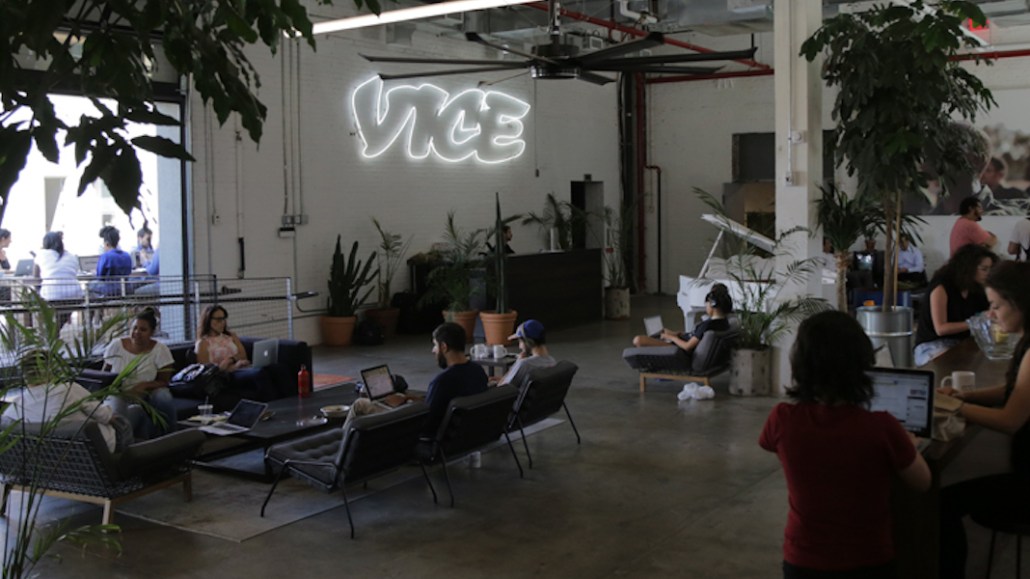
Since getting rid of intrusive ads and making other changes last year, Vice said people are spending twice as long viewing its ads as before.
Vice said that 275 minutes of ads are in view for every 1,000 impressions they are served. Prior to its redesign, Vice said that figure was 101 minutes for every 1,000 impressions, slightly below what Moat says is the industry standard of 128 minutes in the last quarter of 2016. Vice attributes this change to eliminating intrusive ad formats, speeding up the site and making the ads more targeted.
“We had some legacy systems that weren’t as effective at [keeping users engaged with ads] as we would have liked to be,” said Oliver Laubscher, Vice’s chief media officer. “But since we started to unify the sites, we’ve seen sharp increases.”
Vice removed intrusive ad units like overlays, 1600×250 desktop display ads and 320×50 “mobile leaderboard” banner ads, said John Koenigsberg, the company’s vp of media. Vice said on average, its users spend 2.6 minutes on its websites per visit. For comparison, among the top 100 news publishers, users spend 2.2 minutes on-site per visit on average, according to comScore.
These kinds of stats matter for publishers because advertisers are pushing for ads to be seen by actual humans and to be in view for longer periods of time. Publishers have to balance those demands against the need to keep users on-site. The benefit of having ads in view can be negated if it leads to more intrusive units that lead users to ad block.
Koenigsberg said as Vice adds new verticals, such as its health care website Tonic that launched in November, its audience data expands and becomes more nuanced, which can make ads more targeted and relevant.
Another reason ad viewing is up is speed, said Drake Martinet, vp of product.
By investing in its own internal tech stack and pushing back on slow vendors, Vice said that in the past six months it reduced its average page-load time by about 50 percent and its average ad-load time by about 80 percent. This matters for advertising because getting ads to load faster means the ads come in view quicker, which can increase the length of time users view them.
The overlap in timing of Vice’s redesign with its development of proprietary tech has benefited the company.
“With a host of speed and design enhancements, we’re able to test new things and move more quickly,” Martinet said.
Photo via Vice
More in Media

Here are the biggest moments in AI for publishers in 2025
Here are some of the moments that defined how publishers adapted to the AI era this year.

Digiday+ Research roundup: Gen Z news consumption and diversification in the DSP space were 2025’s top trends
As 2025 winds down, we rounded up the biggest trends of the year, based on the data that resonated the most with Digiday’s readers.

What publishers are wishing for this holiday season: End AI scraping and determine AI-powered audience value
Publishers want a fair, structured, regulated AI environment and they also want to define what the next decade of audience metrics looks like.





